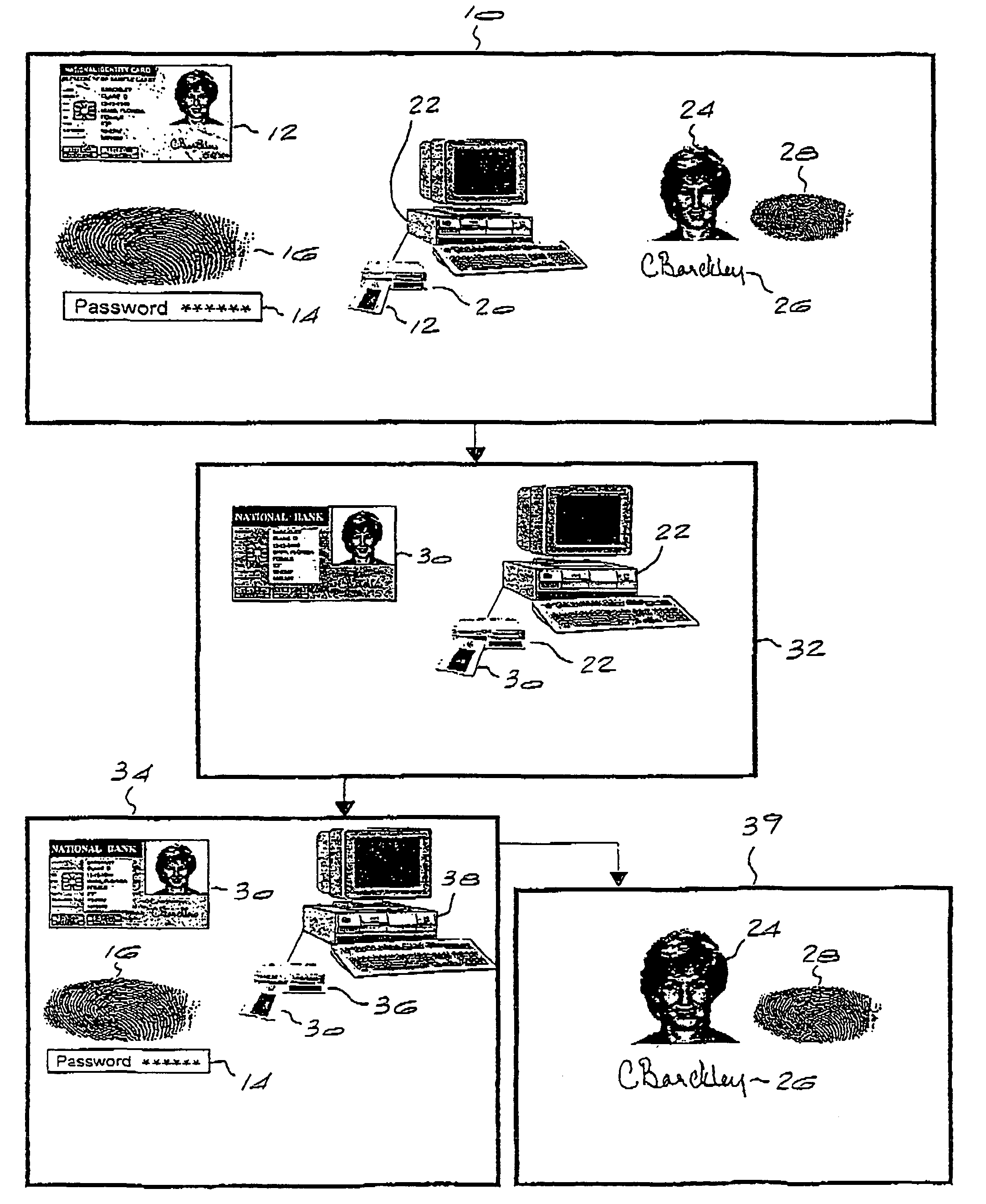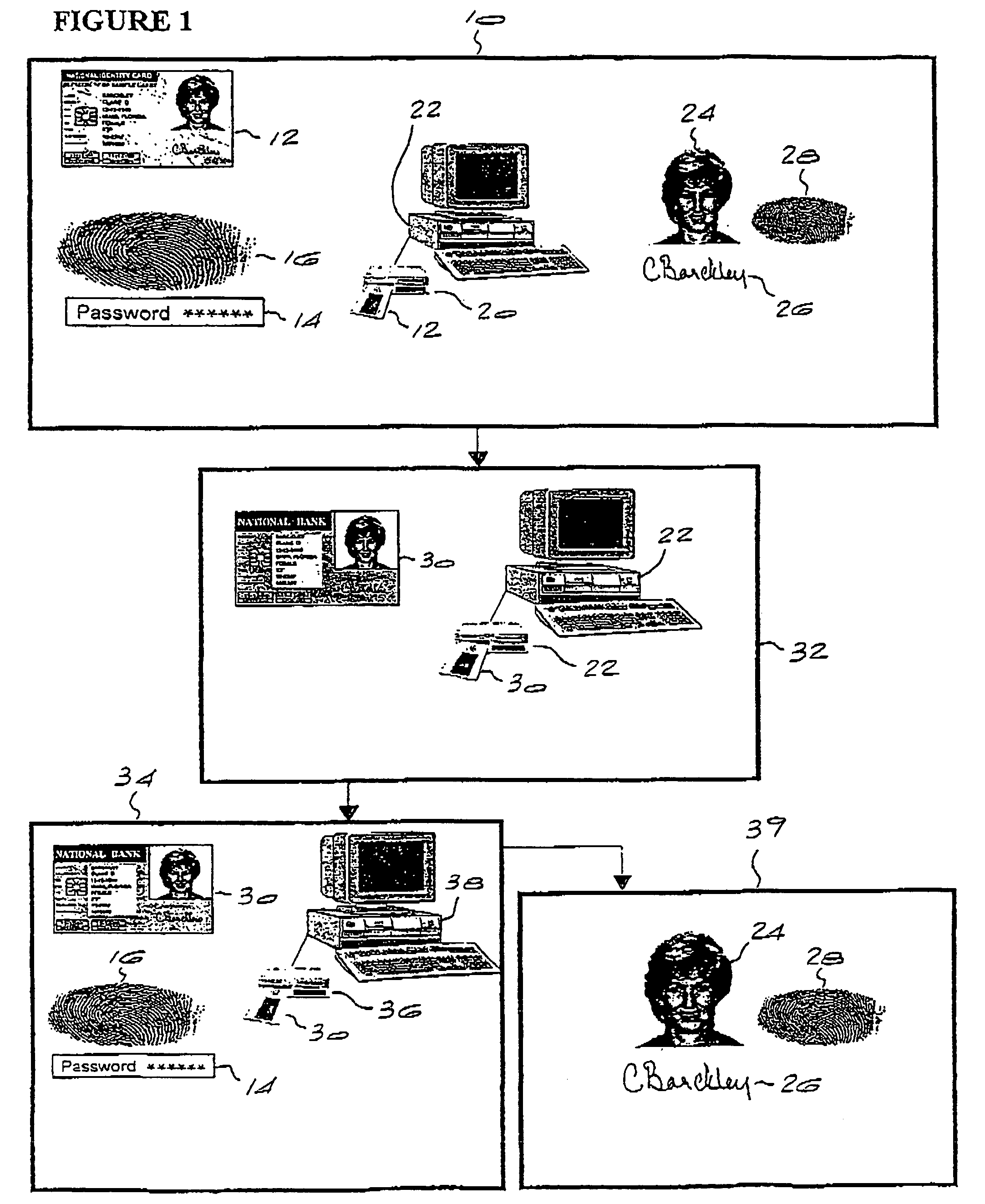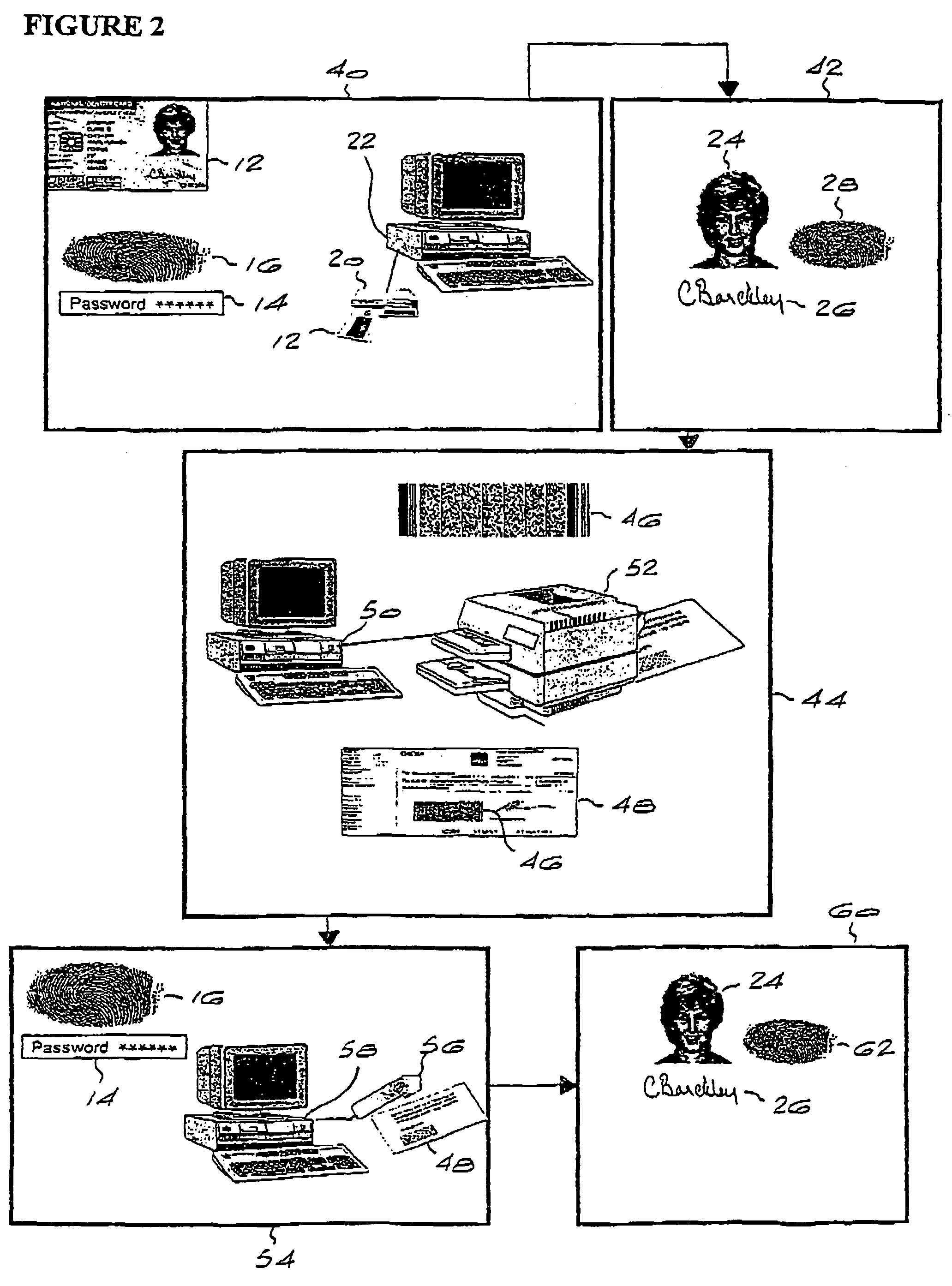Transfer of verification data
a technology for transferring verification data and securely, applied in the direction of verifying the correctness of markings, instruments, computer peripheral equipment, etc., can solve problems such as hammering the ability of institutions to regularly access secure data
- Summary
- Abstract
- Description
- Claims
- Application Information
AI Technical Summary
Benefits of technology
Problems solved by technology
Method used
Image
Examples
first embodiment
[0033]The invention will now be described by way of three embodiments which illustrate various possible applications thereof. The first embodiment applies to the issuing of a second smart card, typically by a bank or other financial institution, to the holder of a first smart card, which is typically an identity card.
[0034]Referring first to FIG. 1, a first series of operator access control, cardholder identification and smart card reading steps are illustrated schematically in block 10. A first smart card in the form of a national identity card 12 is presented to an operator of an institution such as a bank. In the first access control step, verification of the operator is required. This may be achieved in a number of ways, either verifying the PIN code or password 14 of the operator or by matching the fingerprint 16 of the operator using finger biometrics. Naturally, the PIN code is not as secure as the fingerprint matching method as it does not ensure the identity of the operator...
second embodiment
[0046]Referring now to FIG. 2, a verification data transfer method is shown. The first steps of operator access control, reading of the smart card and verification and identification of the cardholder are identical to those illustrated in FIG. 1, as is shown in blocks 40 and 42 respectively. In block 44, the verification data together with any additional data such as that referred to previously with reference to FIG. 1 is compressed and encrypted in the same manner as was described with reference to FIG. 1. This data is then encoded into a two dimensional symbol or barcode 46. The two dimensional barcode has Reed-Solomon error correction which allows for full recovery in the event of partial destruction of the symbol. The two dimensional symbol may either be an image based on two dimensional symbology or a font based on such symbology. Commercially available image-based two dimensional symbologies may be used, including PDF417, Supercode, Aztec QR code and Datamatrix.
[0047]It will b...
third embodiment
[0055]Referring now to FIG. 3, a verification data transfer method is shown. The initial access control and card read step indicated at block 64 and the cardholder verification and identification step shown in block 66 is essentially identical to the corresponding initial steps of FIGS. 1 and 2. Similarly, the two dimensional symbol encoding and printing step indicated in block 68 is identical to the corresponding step shown in block 44 in FIG. 2. Block 70 shows the subsequent steps in which the two dimensional symbol 46 is scanned and written to a third smart card 72. In this step, the two dimensional symbol 46 on the document 48 is scanned using the scanner 56, as is described above with reference to block 54 of FIG. 2. The scanned data is subsequently written to the third smart card 72 via a card reader / writer 74 using exactly the same procedure that was described with reference to block 32 of FIG. 1. The third smart card is subsequently read, the data is processed and the verifi...
PUM
 Login to View More
Login to View More Abstract
Description
Claims
Application Information
 Login to View More
Login to View More - R&D
- Intellectual Property
- Life Sciences
- Materials
- Tech Scout
- Unparalleled Data Quality
- Higher Quality Content
- 60% Fewer Hallucinations
Browse by: Latest US Patents, China's latest patents, Technical Efficacy Thesaurus, Application Domain, Technology Topic, Popular Technical Reports.
© 2025 PatSnap. All rights reserved.Legal|Privacy policy|Modern Slavery Act Transparency Statement|Sitemap|About US| Contact US: help@patsnap.com



